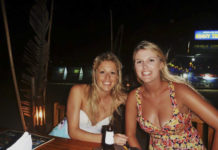In the microscopic small world of Alice in Wonderland, objects can exist in two places at the same time, only looking at a fragment can change a replica on the other part of the universe apparently right away, and Schrödinger’s cat can be simultaneously both alive and dead.
Such unusual, almost other-worldly effects have always been limited to the world of photons and atoms – up until now.
In the scientific journal Nature, researchers at the US National Institute of Standards and Technology (NIST) in Colorado publicised the very first “glimpses” of quantum effects, as they are familiar, occurring on a scale just huge enough to be observed by the human eye.
One of the researchers, Dr. John Teufel, told the Independent: “I think we’re in an extremely exciting time where this technology we have available gives us access to things people have been talking about as thought experiments for decades.” The way they accomplished this sounds almost as unusual as the quantum mechanics itself.
”A mini aluminum drum, about the diameter of a “very skinny hair”, was cooled to only fractionally above absolute zero, which at minus 273.15 degrees Celsius or zero Kelvin is the lowest possible temperature, using microwave light.” While radiating a light on something might usually be expected to warm it up, in this case, it actually “steals” energy from the drum as it reverberates.
Earlier there was thought to be a limitation to how far this cooling could go because light photons striking an object also cause a heating effect. ”But the NIST team were able to “squeeze” the light, Dr. Teufel said, so “all the photons know about each other.”
This allowed them to cool the drum to a position that was previously assumed to theoretically impractical.
It is difficult to indicate the temperature in Celsius because it is so cold, but standard microwave-cooling method permitted the researcher to get the drum to within a few hundred microKelvin of absolute zero or 0.4 quanta. And the new light-squeezing technique then allowed them to decrease the temperature furthermore to just 0.19 quanta.
At this temperature, Dr. Teufel said they were able to observe “glimpses of quantum effects”. “It makes some of the quantum things more visible and more prevalent,” he said. Dr. Teufel and his colleagues are beginning to hope about teleporting something huge enough to be observed.
”Normal computers store information as a series of ones and zeroes. But, as Dr. Teufel explained, “the whole magic of quantum computing is it doesn’t have to be zero or one, it could be zero and one.”
Such theories are hard to understand, but sometimes one simply must eliminate skepticism.























